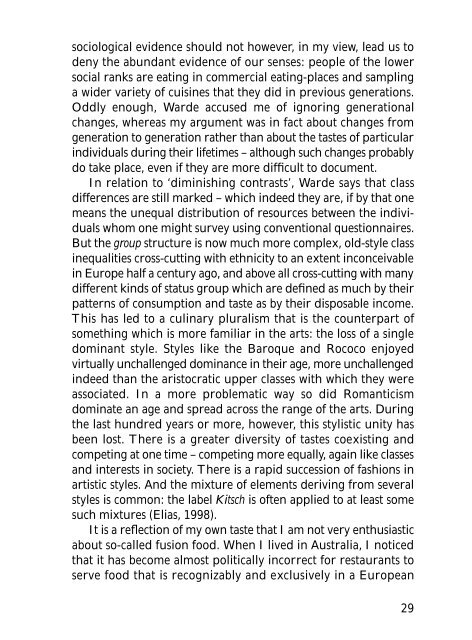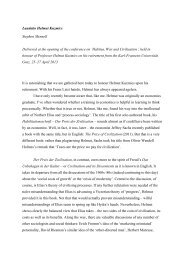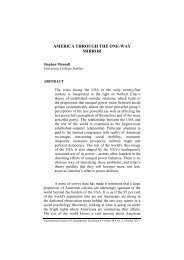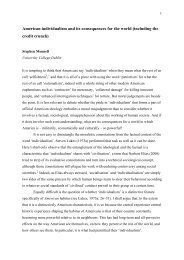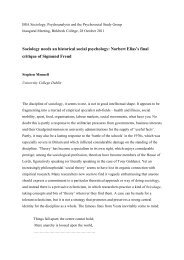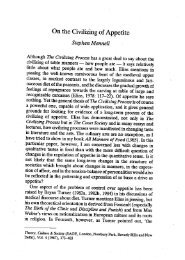Taste, Culture and History - Stephen Mennell
Taste, Culture and History - Stephen Mennell
Taste, Culture and History - Stephen Mennell
- No tags were found...
You also want an ePaper? Increase the reach of your titles
YUMPU automatically turns print PDFs into web optimized ePapers that Google loves.
sociological evidence should not however, in my view, lead us todeny the abundant evidence of our senses: people of the lowersocial ranks are eating in commercial eating-places <strong>and</strong> samplinga wider variety of cuisines that they did in previous generations.Oddly enough, Warde accused me of ignoring generationalchanges, whereas my argument was in fact about changes fromgeneration to generation rather than about the tastes of particularindividuals during their lifetimes – although such changes probablydo take place, even if they are more difficult to document.In relation to ‘diminishing contrasts’, Warde says that classdifferences are still marked – which indeed they are, if by that onemeans the unequal distribution of resources between the individualswhom one might survey using conventional questionnaires.But the group structure is now much more complex, old-style classinequalities cross-cutting with ethnicity to an extent inconceivablein Europe half a century ago, <strong>and</strong> above all cross-cutting with manydifferent kinds of status group which are defined as much by theirpatterns of consumption <strong>and</strong> taste as by their disposable income.This has led to a culinary pluralism that is the counterpart ofsomething which is more familiar in the arts: the loss of a singledominant style. Styles like the Baroque <strong>and</strong> Rococo enjoyedvirtually unchallenged dominance in their age, more unchallengedindeed than the aristocratic upper classes with which they wereassociated. In a more problematic way so did Romanticismdominate an age <strong>and</strong> spread across the range of the arts. Duringthe last hundred years or more, however, this stylistic unity hasbeen lost. There is a greater diversity of tastes coexisting <strong>and</strong>competing at one time – competing more equally, again like classes<strong>and</strong> interests in society. There is a rapid succession of fashions inartistic styles. And the mixture of elements deriving from severalstyles is common: the label Kitsch is often applied to at least somesuch mixtures (Elias, 1998).It is a reflection of my own taste that I am not very enthusiasticabout so-called fusion food. When I lived in Australia, I noticedthat it has become almost politically incorrect for restaurants toserve food that is recognizably <strong>and</strong> exclusively in a European29


